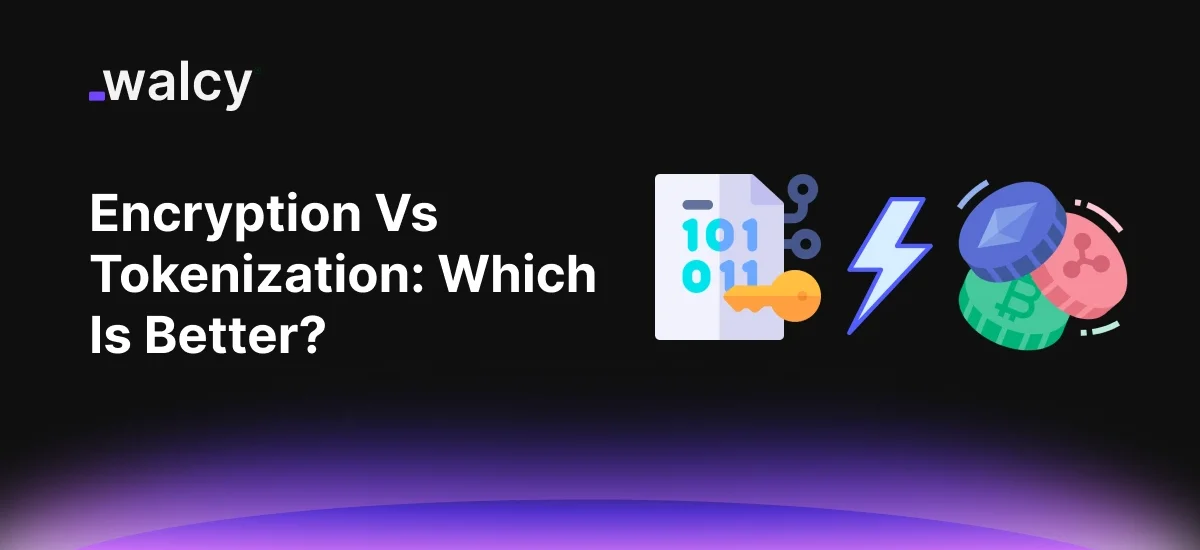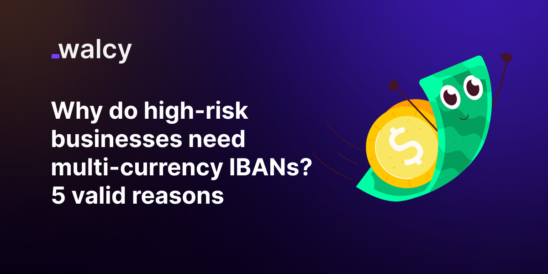Data security is a prime concern for all digital business operations.
This is because organizations have to deploy stringent measures as the level and nature of cyber threats keep increasing.
In fact, among the two most popular ways of securing data today, encryption, and tokenization feature prominently.
But how does each compare, and which outshines the other in securing data?
In this article, we discuss the basics of “encryption vs tokenization”, how they differ from one another, and their unique applications in modern data protection.
What Is Encryption?
It works by altering or transforming readable information, known as plaintext data, into something unreadable due to specified algorithms with the help of encryption keys.
A ciphertext can be transformed into the original plaintext text only by users who have a lawful entry with the necessary decryption key.
Types of Encryption:
- Symmetric encryption:
This works on the model of using only one secret encryption or decryption key like the Advanced Encryption Standard is shortened as AES; Data Encryption Standard is popularly known: as DES.
- Asymmetric Encryption:
It involves the use of a pair of keys, one for encryption in the public domain and another for decryption, kept private. Examples include RSA and ECC- Elliptic Curve Cryptography.
- Hybrid Encryption:
Symmetric and asymmetric encryption techniques are combined in this method for more security.
Advantages of Encryption:
- Data confidentiality
- The protection of data during transit and rest is provided by end-to-end encryption.
- Mostly used for secure communications, such as HTTPS and Email encryption.
Read about: Online Payment Security: Best Practices to Keep Your Transactions Safe
What is Tokenization?
Tokenization is a process in which sensitive data is exchanged for no sensitive placeholders known as tokens.
The actual data is stored in a secure token vault, and the token has no value that could be utilized outside the system.
Types of Payment Tokenization:
- Private Vault-Based Tokenization: Tokens are matched with sensitive data stored within a secure vault.
- Private Vaultless Tokenization: It does not require any centralization in a token vault through the algorithmic creation of tokens.
Benefits of Tokenization:
- Reduces scope of compliance DSS, etc.
- Renders tokens useless through direct reverse-engineering.
- Finds its best usage in securing the payment information as well as PII.
What Is the Difference between Tokenization and Encryption?
Encryption and tokenization are used to protect data, but they differ in approach and where their application fits into the data life cycle: –
Simplified Explanation: How Encryption and Tokenization Differ
Encryption and tokenization are two methods of securing sensitive data, although their mechanisms vary. Here is a simplified breakdown:
Encryption converts sensitive information into unreadable text, known as ciphertext, with the use of mathematical algorithms and keys.
It requires a decryption key to make it readable again. It is best for securing data in transit, such as emails or online payments, and at rest, as in databases.
Encryption can be resource-intensive, particularly for large data sets, and achieving compliance with standards such as PCI DSS is not easy.
On the other hand,
Tokenization replaces sensitive data with random tokens.
These tokens have no value outside the system because they do not contain any real data. The actual sensitive data is kept in a safe place, a secure “token vault.”
Tokenization is ideal for protecting static information, such as PII or payment data.
It is faster and simpler to operate than encryption in some operations and also reduces the burden of compliance efforts related to various regulations like PCI DSS.
Tokenization vs Encryption vs Hashing
Hashing is another data security technique, but it’s pretty different from encryption and tokenization. It works as follows:
Hashing changes data into a fixed-length string by using some mathematical formula.
After the data is hashed, it can never be returned to its previous state. It’s mainly used in password storage and verification, and file integrity checking.
Encryption is an activity that changes between two directions, encrypted to unencrypted or vice-versa. It is ideal to keep sensitive information while in use and at transport.
Tokenization is non-reversible with access to the security token vault also; it replaces the sensitive data in active use that reduces compliance scope in the case of Payment details and PII data.
Simplification of Key Differences
Reversibility: Hashing is one-way and irreversible, while encryption and tokenization are reversible, but encryption requires a key, and tokenization requires access to a token vault.
Use Cases: Hashing is ideal for password protection. Encryption is best for securing data on the move or in storage. Tokenization is great for protecting stored data and simplifying compliance.
Security Dependence: Hashing relies on strong algorithms. Encryption depends on secure keys. Tokenization relies on the token vault’s security.
Read about: Online Banking Security: A Comprehensive Overview”
Tokenization Vs Encryption Vs Masking
Masking refers to hiding part of the data with certain symbols. Example 1234—5678. Practically, in nature masking is quite different from encryption and tokenization.
Masking: Very suitable to represent purposes, and no security is provided for the underlying data.
Encryption: It secures data by reformatting it into unreadable ciphertext.
Tokenization: Secures data by replacing them with tokens.
Use Cases of Encryption and Tokenization
Encryption and tokenization find applications based on different needs for security in a given environment.
Some use cases where:
Encryption is Commonly Used
- Secure Communications: This protects emails, instant messages, and HTTPS traffic.
- File Encryption: It protects sensitive documents and media files.
- Database Encryption: Entire databases are encrypted to protect the data contained within them.
- Cloud Security: Information is encrypted before sending it onto the cloud.
Some very common use cases of tokenization include but are not limited to:
- Payment Processing: credit card details to keep them safe during a transaction.
- Health Care: patient records; compliance to HIPAA.
- E-commerce: all data of customers, including shipping addresses.
- Identity Management: Social Security numbers along with other PII replaced by Tokens.
Payment Encryption Types
Encryption is one of the key determinants in securing a payment. Two important types of encryption include the following:
- Point-to-Point Encryption: P2PE entails encryption of in-payment data at the point of its entry, decryption is performed at the secure endpoint.
- End-to-end Encryption: E2EE entails protection throughout the entire life of the payment data.
Benefits of Encryption in Payment Security:
- Ensuring the confidentiality of the data during the time of the transaction.
- It reduces risks regarding data breach incidents.
- Gain customers’ trust in making online payments.
Advantages of Tokenization in the Security of Payment:
- Low risk of sensitive data leakage.
- It simplifies the complexity of PCI DSS compliance.
- Allows for frictionless recurring billing processes.
Symmetric Encryption
The symmetric encryption methodology is very much in use for secure communication and storage of data.
For encryption and decryption, it employs separate keys.
That makes it faster but less secure as compared to asymmetric encryption. Most in use are AES and Triple DES.
Read about: End-to-End Payment System: Process and Benefits
Encryption vs Tokenization: How to Choose
One major differentiation that can be considered is for security needs, including:
- Compliance: Tokenization does a better job at reducing the compliance scope, such as PCI DSS.
- Performance: Tokenization is faster and more efficient in certain use cases.
- Data Sensitivity: Encryption is best for highly sensitive data, such as financial records.
- Integration: Encryption is easier to integrate into an existing system, while tokenization requires maintaining a token vault.
Conclusion
Encryption and tokenization are complementary resources in the modern data security landscape.
In as much as encryption alters data into unreadable formats, tokenization replaces sensitive data with tokens with the intention of reducing compliance requirements and enhancing security.
Each organization has to do what best fits the particular use case of the two, depending on the need, regulatory requirements, and operational goals.
Maybe in this dynamic cyber security world, encryption and tokenization could jointly provide broad protection for sensitive data and give assurance of compliance, customers’ trust, and business continuity.
Read about: International Payment: Challenges and Solutions
FAQs
Which industries have a great demand for tokenization to ensure data security?
Tokenization plays a major role in those industries that deal with the sensitive personal and financial information of customers, including:
- Medical/Healthcare: Protecting patient medical records to comply with HIPAA.
- Retail and E-commerce: Securing credit card and payment information when making online purchases.
- Financial Services: Managing sensitive PII such as social security numbers.
How do regulatory requirements impact the decision between encryption and tokenization?
Tokenization is preferred in many industries, such as PCI DSS because it reduces the scope of compliance.
While strong, encryption may require very extensive compliance effort simply because it is reversible.
Tokenization ensures that sensitive data will never leave the secure environment; hence, it simplifies audits and compliance reporting.
For what purpose is symmetric encryption used in modern data security?
The symmetric encryption will use the same key both at the places of encryption and decryption. In the case of large volumes, it is efficient to use, for instance, database encryption or storage of files.
Although faster than asymmetric encryption, proper management of a shared key is required to avoid any unauthorized access.
How does tokenization make recurring payment processes easier?
The tokenization of payments provides reusable tokens, ensuring that businesses can store the same token in place of sensitive payment details.
Customer information is thus kept secure while recurring bills will be seamless without requiring the need for one’s payment information to recurring.
What are the unique security risks of encryption compared to tokenization?
Encryption risks include the compromise of an encryption key. If an attacker manages to get the decryption key, they can revert the ciphertext to its original form.
In tokenization, sensitive data is not stored within the token itself. Because of this reason, tokenization is less prone to such kind of risks. The security of tokenization rests on the integrity of the token vault.
Do follow us on Facebook and LinkedIn, to stay connected with us.



